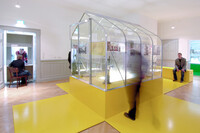
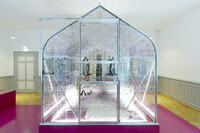
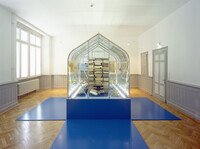
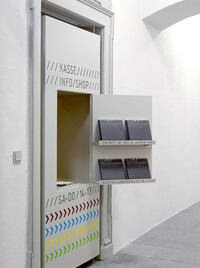
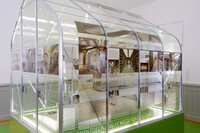
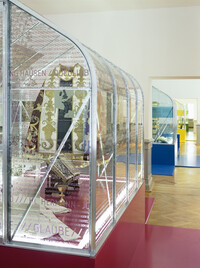
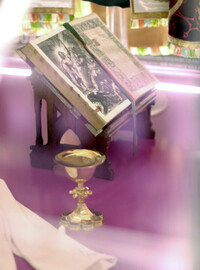
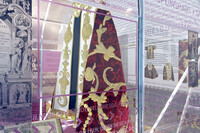
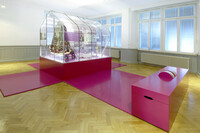
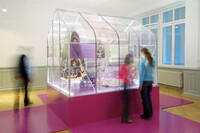
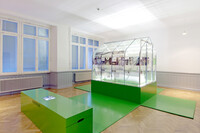
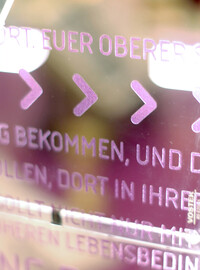
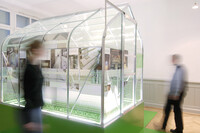
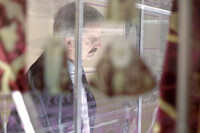
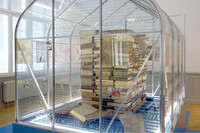
because the first is lost... - Exhibition Design
The world of the living monastery and thus 800 years of history perished and lost in 1803 with the dissolution of the monastery. The question that stood at the beginning of this exhibition was: How should you show something that no longer exists? The exhibition is an appeal to the imagination and works less with the authentic object. It makes history transparent, but does not hide its uncertainty - to know something but no longer have anything.
Type. In the four rooms you can see four exhibition objects: greenhouses, banal everyday products from the hardware store. Their form of presentation - their integration into the exhibition and their pedestal position - leads away from the hyper-real product. Due to the connection between the exhibition architecture and the monastery context, they are spatially elevated and become shrines. They are references to the past of the place - the shrine of the Magi. This creates an ambivalence between the historical and the current type. Both images - shrine and modern everyday product - permeate and relativize one another. In her pictures we move through time.
Transparency. The medium used to convey the contents of the exhibition is glass. The building material, which is not actually visible, is printed here and thus made visible. Here the glass does not simply want to provide clarity and pure transparency, but rather to create an ambiguity and complexity of information. Looking through is here a superimposed strategy to connect the real with the fictional. It is about temporal and spatial simultaneity of objects and content. When looking at the shrines, the past and present are superimposed. The different levels of time and space are mixed up in a dialogue between foreground and background, figure and ground, space and surface. In this respect, the transparency shown is not just a formally justified presentation that aims to create something special and tension. It also helps us to convey the inconsistency and transience of history. The destabilization of cognitive certainties - for the first is lost - is a method.